Colin Miskelly, Birds of Te Araroa 19 – Te Anau Highway to Bluff, Te Papa Blog, 15 March 2024
Between November 2023 and March 2024, Natural History curator Colin Miskelly walked the length of Aotearoa New Zealand on Te Araroa Trail – counting every bird seen or heard along the way. In this twentieth blog in the series, Colin describes birds encountered while walking the final section, through the Takitimu, Woodlaw, and Longwood Ranges to Colac Bay, then east along the coast to Invercargill, and south to the trail end at Stirling Point, Bluff.Zero day? – or not?
A Department of Conservation ute pulled up beside us as we walked down the long, dusty Mavora Lakes Rd north of State Highway 94. The Takitimu Mountains loomed ahead of us as the DOC ranger lowered his window to offer a lift into Te Anau, and asked if we were planning to take a ‘zero day’ the next day.

‘Zero day’ is the term used by Te Araroa walkers when they take a day off, whether to recharge their batteries, seek resupplies, or avoid bad weather. As committed Every Last Inch walkers, accepting a lift was not an option, unless we could return to the same spot before resuming our walk. But we were concerned that the ranger thought the impending southerly storm could be bad enough for us to consider spending the next day sitting in a hut.

We decided that there would be enough shelter from the forest and valley floors the next day, and so we sloshed on through the bogs between Princhester and Aparima Huts while being pelted by wind-blown rain and hail that alternated with occasional patches of sunshine. Conditions worsened as we descended from the Telford Tops in galeforce winds the following day, though the blowing low cloud concealed how much snow had fallen on the surrounding peaks.

The cloud lifted by the following morning, revealing not only the snow, but also our first glimpse of the sea since Tasman Bay from the Richmond Range, 44 days previously.

A day on the farm
After departing Telford campsite, we had the unusual experience of walking for an entire day (28 km) on a single farm. At 12,145 ha, Mt Linton Station is one of New Zealand’s largest privately-owned farms. It is claimed to carry more stock units than any other New Zealand farm, with 3,000 Angus breeding cows plus replacements, and 42,000 Texel-Romney ewes plus replacements.

The warm welcome at Birchwood Station after leaving Mt Linton was a welcome change from the cold, minimalist Telford campsite. A roaring fire and homemade pizzas were much appreciated, plus the owners invited us to call in at the shearing shed before hitting the trail the next morning. They, their staff and the record-breaking Forde Winders shearing gang were part way through shearing 12,000 sheep in the 7-stand Birchwood woolshed.

Mud and trail magic in the Longwood Range
From Birchwood, Te Araroa traverses Woodlaw Forest before entering the notorious Longwood Range. For almost the entire length of the country, we had used the 5-point Raetea (Kaitaia) scale to score the muddiness of trail sections. This soon became a subset of the 8-point Longwood scale as we slogged and sloshed for 36 km southward, leaving another 2 points available to be added following significant rain events.

About 7 km before the end of the Longwood mud, we were astonished to find another superb example of trail angelism floating in the cesspool outside Turnbull’s Hut. Three large chilly bins labelled ‘TE ARAROA TRAIL MAGIC’ were filled with soft drinks, beer, chocolate bars, and fresh fruit.
Foveaux coast and New River Estuary
Te Araroa rejoins the coast at Colac Bay and follows it eastward for about 35 km towards Invercargill. This includes the Tīhaka Beach Track around the picturesque rocky headlands and embayments southwest of Riverton / Aparima, and about 22 km along the great sweep of Oreti Beach.

Te Araroa trail notes make very few references to birds. However, the notes for the 10 km or so of stopbanks on the east side of the New River Estuary state “you’ll be treated to an area teeming with birdlife”. The sheer number of birds (mainly waterfowl, waders and gulls) slowed our progress towards Bluff, as I made frequent stops to identify birds and estimate the size of flocks.

The end
Te Araroa runs along Te Ara Taurapa pathway/cycleway beside State Highway 1 for 16 km north of Bluff before crossing the base of the Bluff peninsula to the outer (western) coast at the iconic rusty metal Bluff sign.

Rather than following the coastal track around to the track terminus at Stirling Point, Te Araroa takes in one last gratuitous summit (Bluff Hill / Motupōhue) before disgorging walkers at the full stop.

Birds of the Takitimu, Woodlaw and Longwood forests
The bleak conditions as we traversed these three southern forests likely contributed to the low diversity and abundance of endemic birds counted in about 77.5 km of forest. Tomtit | ngirungiru with 208 birds and bellbird | korimako with 205 were the only species that occurred at a rate of more than one bird per kilometre. Scarcer species included grey warbler | riroriro (62), New Zealand fantail | pīwakawaka (53), brown creeper | pīpipi (36), rifleman | tītitipounamu (13), kererū | New Zealand pigeon (11), tūī (6), and yellow-crowned parakeet | kākāriki (3). We also heard an additional kākāriki near the southern end of the Longwoods, which may have been a red-crowned parakeet (they are reported to be present in nearby More’s Bush after an illegal aviary release).

A notable feature of these forests was the higher proportion of black fantails than encountered elsewhere on Te Araroa (15%). Takitimu forest was the only place where another Te Araroa walker commented on seeing a black fantail, asking if it was a different species to the usual pied birds, which have largely white tails (it is not – black fantails are a rarer colour morph of the same species).
Live and dead birds of Jacobs River Estuary (Riverton) and Oreti Beach
Oreti Beach has far more coastal birds than most sandy beaches around the country. The sheer numbers of birds at the western end of the beach and in the adjacent Jacobs River Estuary were a challenge to count into the glare of the low morning sun – especially as there were two species of small gulls and two species of oystercatchers.
The most abundant species counted were 1,170 South Island pied oystercatchers | tōrea, 440 red-billed gulls | tarapunga, 269 black-billed gulls | tarapuka, 132 black-fronted terns | tarapirohe, 72 banded dotterels | pohowera, 67 ruddy turnstones, and 36 each royal spoonbills | kōtuku ngutupapa and variable oystercatchers | tōrea pango.

The turnstones were a particular highlight, as Oreti Beach was just the second site where we had encountered them on Te Araroa, after Ambury Farm Park on the Manukau Harbour. They are the third most abundant Arctic-breeding wader species that migrates to New Zealand (after bar-tailed godwit | kuaka and red knot | huahou), and several of the birds had started to moult into their colourful breeding plumage.
The 30 km of exposed coastline between Colac Bay and Invercargill provided a further opportunity to collect data for the New Zealand Beach Patrol Scheme. We found 25 dead seabirds, with little penguin | kororā the most frequent (11 corpses). Like the little penguins, most of the other species found are commonly seen from the coast or in Foveaux Strait (including three fairy prions | tītī wainui, two mottled petrels | kōrure, and one each black-billed gull | tarāpuka, sooty shearwater | tītī, common diving petrel | kuaka, and spotted shag | kawau tikitiki. More southern (subantarctic) seabirds were represented by a white-headed petrel and a white-chinned petrel | karetai kauae mā, with the latter being only the third that I have found on a New Zealand beach (and the second for Te Araroa – see: Birds of Te Araroa 1 – Cape Reinga to Kaitāia).

Birds of New River Estuary
If the waders of Jacobs River Estuary were challenging, the waterfowl, waders, and gulls of New River Estuary were almost overwhelming – and required frequent halts to the 5 km/h pace that we could otherwise maintain on the excellent walkways around the estuary.

The most abundant species were 2,058 grey teal | tētē -moroiti, 1,489 Canada geese | kuihi, 522 black swans | kakīānau, 304 mallards | rakiraki, 268 spur-winged plovers, 161 black-billed gull | tarāpuka, 144 Australasian shovelers | kuruwhengi, 134 New Zealand scaup | pāpango, and 132 pied stilts | poaka.

A high-flying Foveaux shag | mapo was a highlight as we crossed the isthmus between Bluff Harbour and New River Estuary, and became the penultimate species added to the trip list. Foveaux shags are marine specialists, and I didn’t expect to see one so far from an exposed rocky coast.
The last bird
There are several possible ways to define the last bird of Te Araroa. It could be the last (111th) species to be added to the overall trip list, it could be the final species name that I added to my notebook as part of the final 0.9 km transect as I descended Tōpuni Track from the summit of Bluff Hill / Motupōhue to Stirling Point, or it could be the last individual bird that I saw before lowering my binoculars, announcing ‘Enough!’ and becoming a NAFI*.

As it happens, all three definitions produced the same result: sooty shearwater | tītī, the famed muttonbird that is gathered as a cultural harvest from islands around Rakiura / Stewart Island. The annual muttonbird season begins on 1 April. However, Rakiura iwi who hold traditional rights to be muttonbirders are able to access their islands to prepare for the harvest from 15 March, which was only a few days after we reached Bluff. I counted 154 tītī off the Bluff coast during the last 5 km of Te Araroa.

Tītī are remarkable birds. In addition to being capable of diving to depths in excess of 60 metres to catch their prey, they often travel 2,000 km each way to the Polar Front when feeding their chicks, and their annual migration to the North Pacific (reaching Japan, Alaska, and California) means that breeding birds can travel 74,000 km in a year (and more than 3 million kilometres in their lifetime), averaging more than 500 km a day.
They are a perfect species to put a mere 3,200 km walk into perspective.
*Not Another F@#%ing Inch
Bird species added since the previous section
Sooty shearwater | tītī, spotted shag | kawau tikitiki, Foveaux shag | mapo, little owl | ruru nohinohi.
Summary statistics for section nineteen (the final section)
Cumulative totals for Te Araroa are given in parentheses.
- Days on the trail = 9 (124)
- Kilometres travelled and surveyed = 239.9 (3,225.6)
- eBird/Atlas checklists completed = 136 (1,790)
- Number of bird species = 59 (111)
- Total birds seen or heard = 11,435 (104,429)
- Most abundant species = (the native) grey teal | tētē-moroiti (2,058, all on the New River Estuary, Invercargill)
- Most abundant endemic species = South Island pied oystercatcher | tōrea (1,169, all between Riverton and Invercargill)
- Most frequent species = (the endemic) bellbird | korimako (45.7 % of checklists), followed by tomtit | ngirungiru (34.1 %)
- Endemic bird score = 53

Postscript: Gordon and I started our hīkoi at Cape Reinga on 2 November and reached Bluff on our scheduled date of 11 March, which was 5 days before we were due at my son’s wedding near Martinborough, east of Wellington. We hope that Kieran and Tess are not expecting us to bust out any flash moves on the dance floor. We might stick with the Te Araroa Shuffle.

